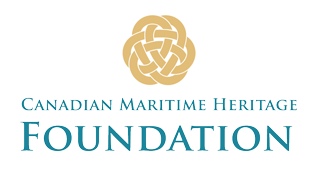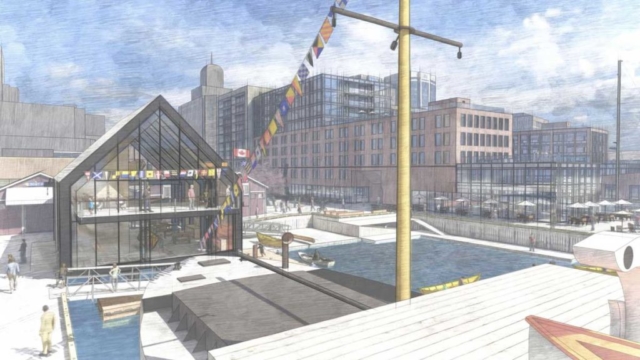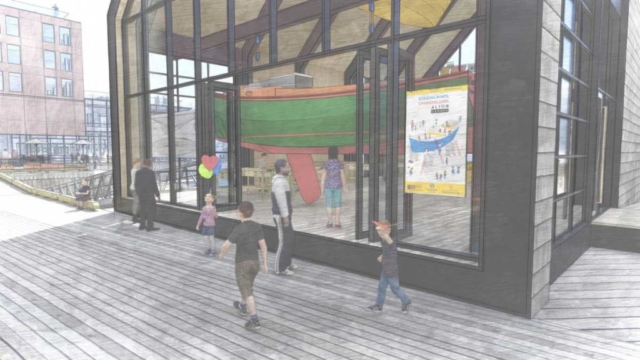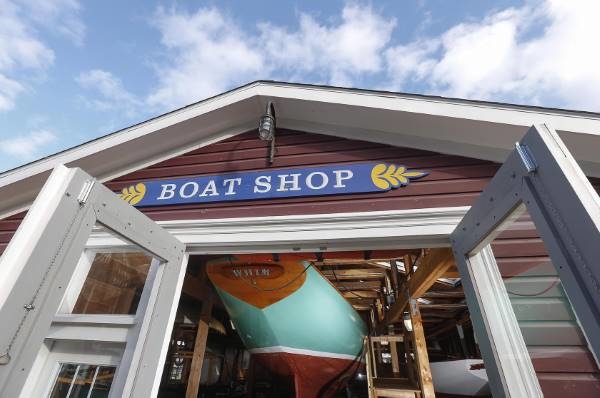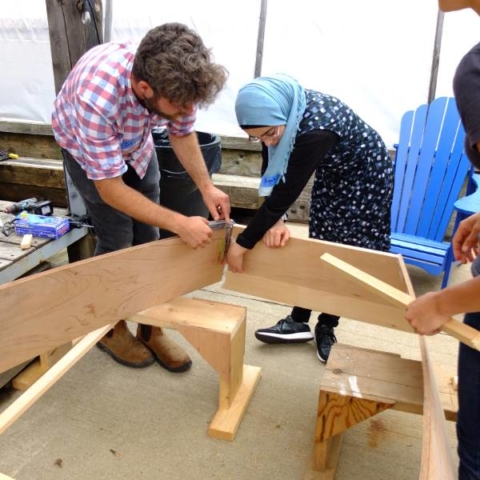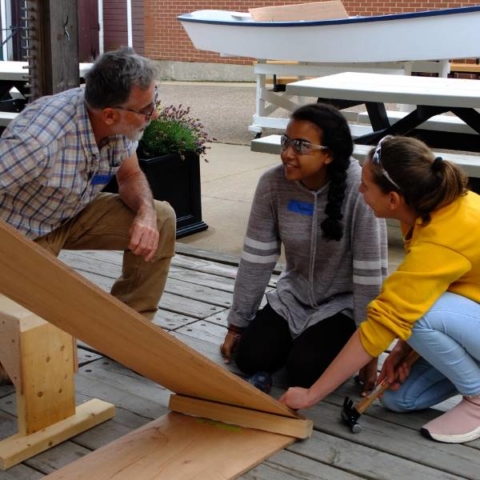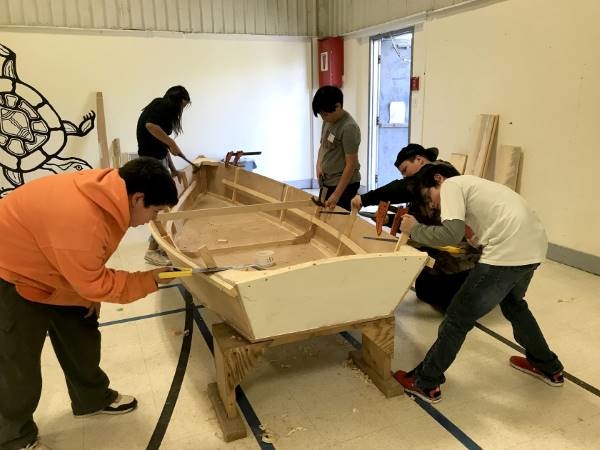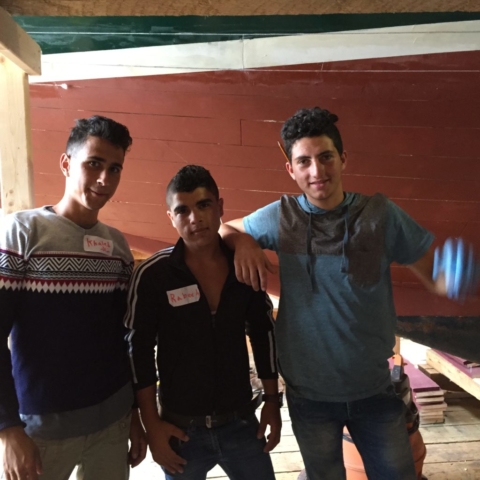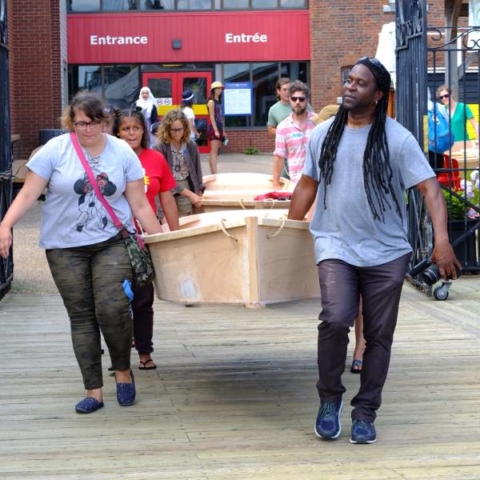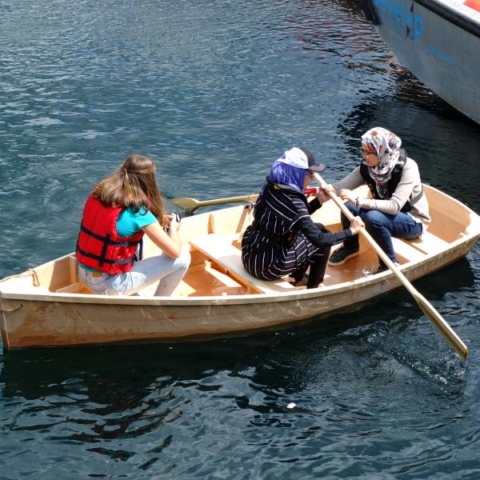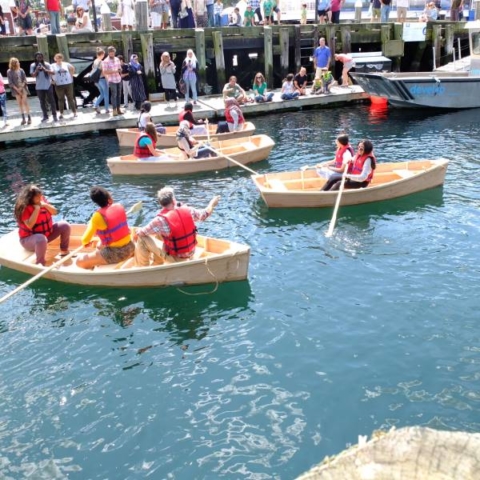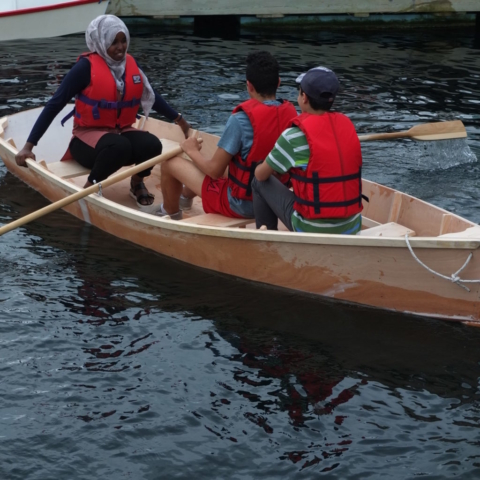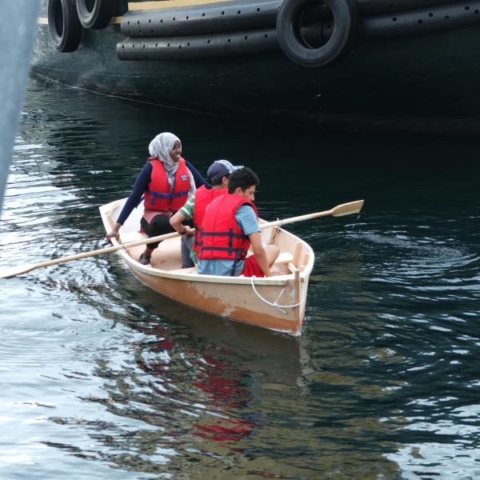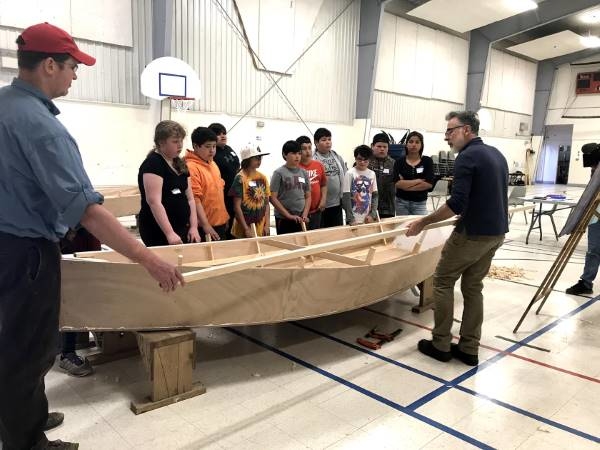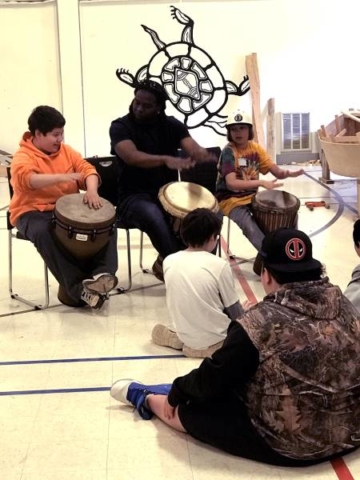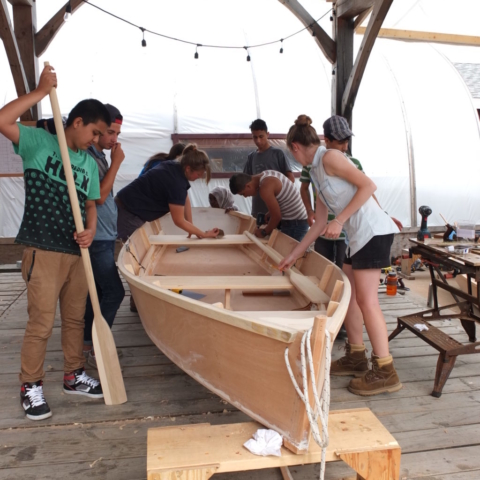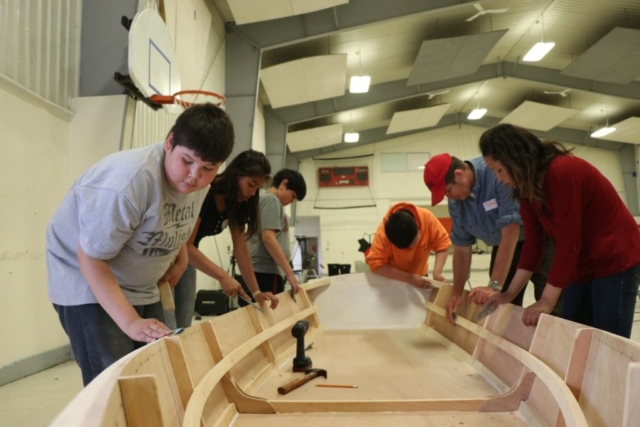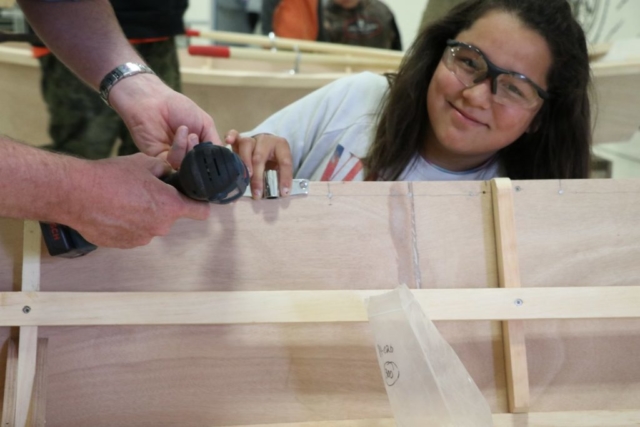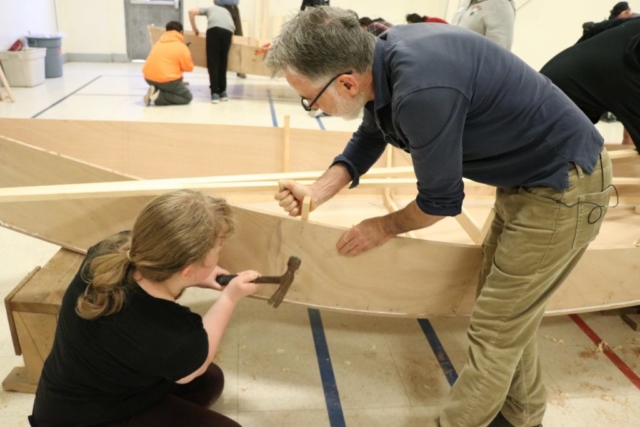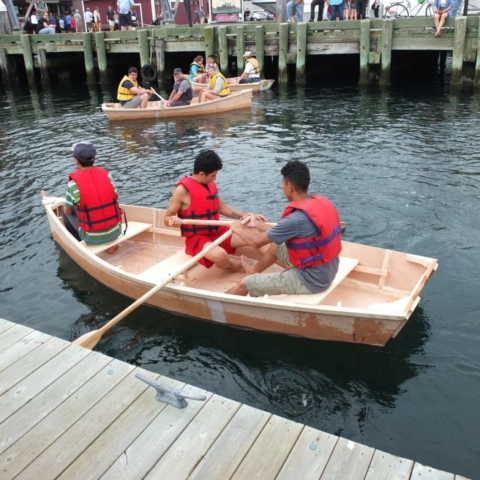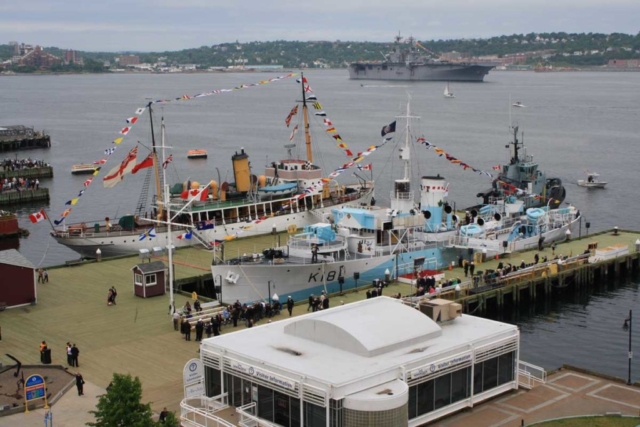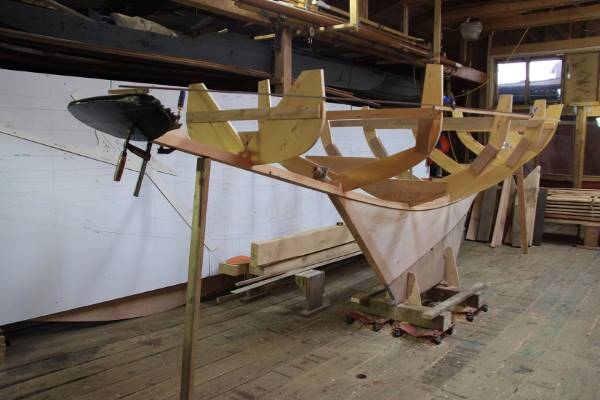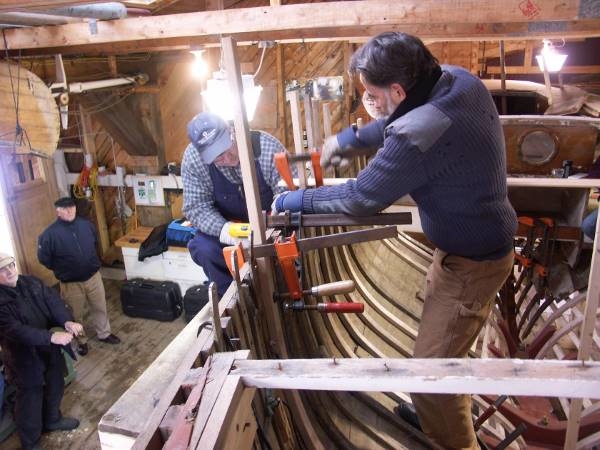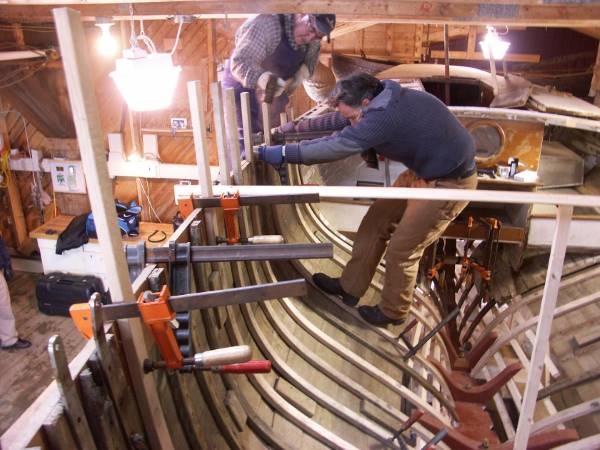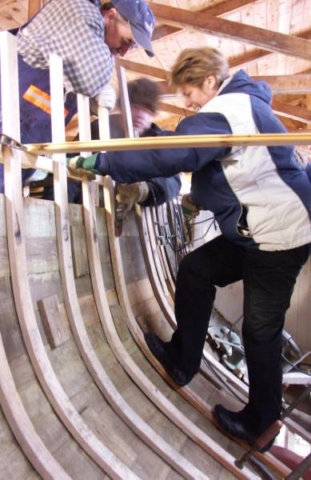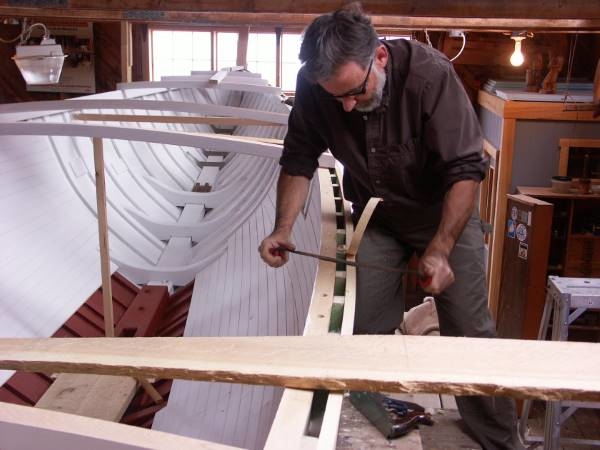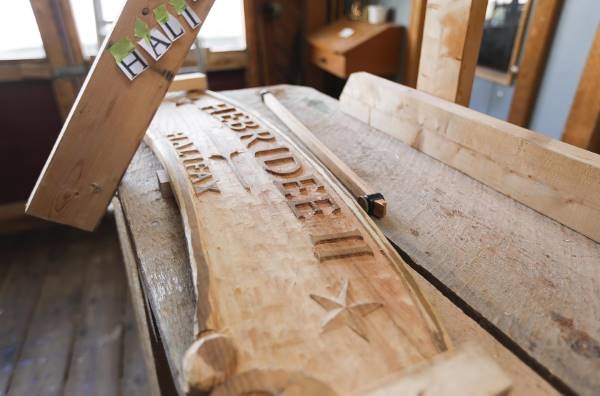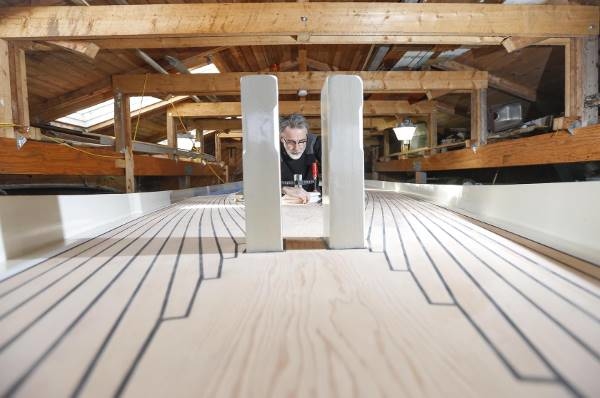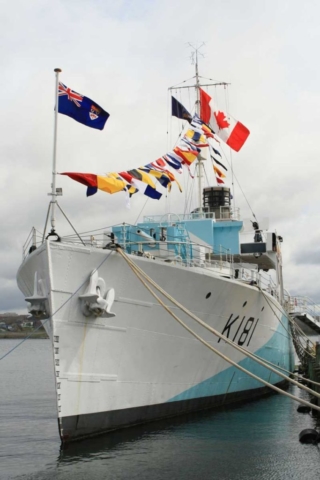The Canadian Maritime Heritage Foundation has been inspired for years by the passionate commitment of Maritime Museum leaders and staff to working with kids-at-risk from under-served communities throughout Nova Scotia; building boats with them; sparking their imaginations; and planting seeds of self-confidence that can lead to changed lives.
For the past 10 years Museum staff have been building boats and changing the lives of kids-at-risk with imaginative programs that they’ve shoe-horned into tight spaces between restored classic Nova Scotian sailing vessels in our boat shop, on the deck of CSS Acadia, and in gymnasiums like the one in Pictou Landing First Nations School
The success of these programs has created a demand that has far outstripped the Museum’s limited capacity to deliver. In the summer of 2018 the Boat Builder, General Manager and Curator went for a creative sail and landed having hatched a dream; they told everyone who was willing to listen, “We’re going to build a Boat School!”
Seven years later, their dream is being given concrete form. A new Boat School building and marina are being built over the water at the juncture of the Waterfront Boardwalk and the Acadia wharf. The new maker spaces it will provide, along with new workshops and classrooms onboard CSS Acadia, will enable the Museum to serve ten times as many kids-at-risk with boatbuilding and on-the-water programs.
So, Museum staff haven’t been waiting for this building to be built to start building boats and doing exciting on the water programs with kids; this new creation is being built on the foundation of the good work they’ve been doing for years.
For our Foundation, sharing this Boat School dream and its community values with our generous donors has led to an outpouring of financial support for the Boat School’s construction and its programs which has been both breathtaking and humbling.
Just to be clear, our Foundation isn’t sitting on a huge endowment: we have no funds of our own. Everything we’re plowing into the Boat School project has come from what we’ve raised for the project from donors, both the Province of Nova Scotia, the Government of Canada’s Green and Inclusive Community Buildings program and private companies, foundations, and individuals, led by Irving Shipbuilding, who together have contributed $4,686,000 to the Boat School project; $3,061,000 for Capital and $1,625,000 for Program.
We enthusiastically acknowledge and celebrate these donors; without their generosity and vision none of this would be possible. They are the rocks on which the Boat School is being built.
So, Join Us in Celebrating These Generous Donors to the New Boat School at the Maritime Museum of the Atlantic
Platinum Donors
Province of Nova Scotia
Government of Canada: Green and Inclusive Community Buildings
Irving Shipbuilding
Gold Donors
Scott McCrea, the Armour Group
Bank of Montreal
Scotiabank
Silver Donors
Ken and Dorothy Rowe Family Foundation
TD Bank
J and W Murphy Foundation
Windsor Foundation
Hewitt Foundation
CIBC
John McLennan
RBC Foundation
Bronze Donors
Dexter Construction
River Phillip Foundation
Rob Barbara and Robin Thorsteinson
Benefaction Foundation
Tripp/Smith Family Foundation
We also thank the many other generous donors who are helping to make our Boat School dream a reality.
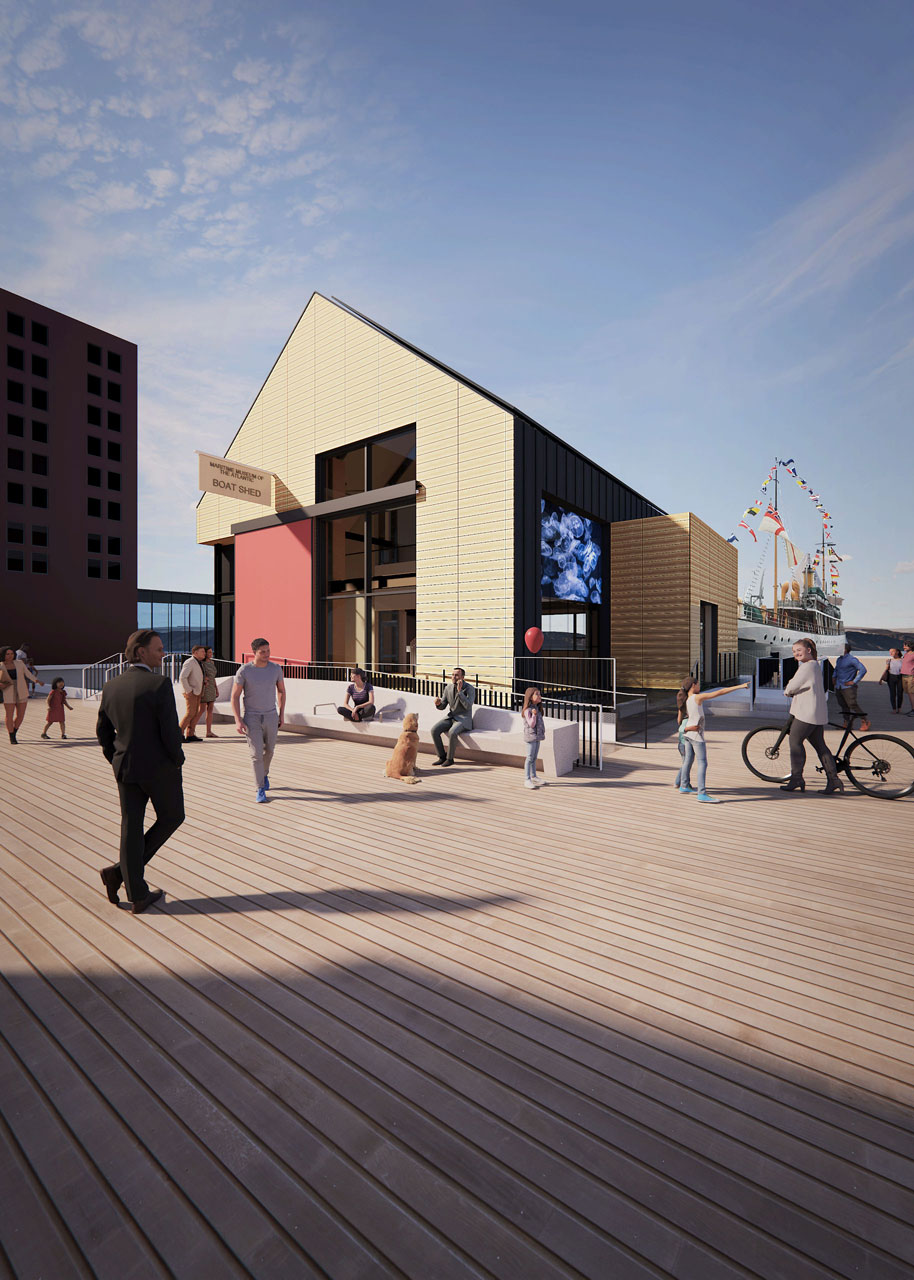
Watch the Boat School being built on Nova Scotia Webcams:
